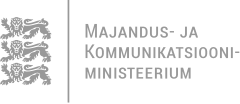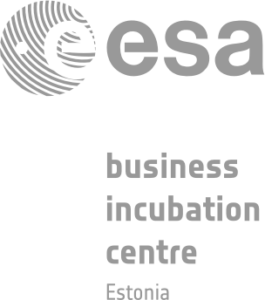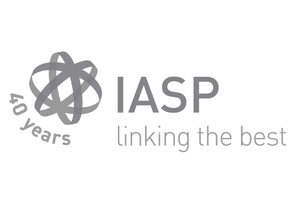21.03.2018
Smart screening to detect patients at risk for COPD
The “Smart COPD Screening and Primary Level SPG” project is designed to identify those at risk for COPD as early as in the family medicine setting.
Priit Kruus, project manager at Dermtest technology company, explains that the goal of their project is to use a digital method to detect patients who already have COPD or are at risk of developing the disease, before their condition gets severe. Diana Ingerainen, family doctor from the Järveotsa family doctor practice, adds: “The goal of the proposed solution is to find out whether this method could be used to identify this risk group, which is very important in the public health context. The quicker we are able to detect those patients and the more stable their condition is, the better their quality of life.”
The solution uses an existing database of the family medicine practice, custom developed algorithms and evidence-based questionnaires, while another step is maximum automation of patient-doctor communication. In the future, automated processes will hopefully help save valuable human resources.
“First, we used algorithms integrated into the family doctors’ database to pick out, on the basis of diseases listed in the treatment guidelines, patients who have a COPD concomitant disease or a potentially similar one – namely patients who often suffer from bronchitis, infections of the upper and lower respiratory tract, cough, etc. COPD patients often have pre-existing conditions (which have developed before COPD), both hypertension and diabetes, and cardiovascular diseases may develop simultaneously or later on. We were not able to include smoking in the data-based screening stage as the most important risk factor, because harmful habits, including smoking, are not registered. We sent a risk questionnaire by e-mail or SMS to all patients with existing risks,” explains Ingerainen, describing the work process.
COPD screening questionnaire lists evidence-based risk factors, such as information on smoking, breathlessness, coughing, or living or working in a high-risk environment. The screening questionnaire was prepared in cooperation with the Estonian Family Doctors Association and the Estonian Respiratory Society, and a separate environment was set up for respondents. “Many responded through digital channels, but those who showed up at the practice after receiving the message filled out the questionnaire with the help of a family nurse,” says Ingerainen.
“The sample included patients 40 years of age or older. The questionnaire was forwarded to 490 patients of whom 168 have responded by now (as of early March). For 52 respondents, the questionnaire indicated a heightened risk for COPD and these patients should undergo a spirometry test. Thirty-one of them have taken the test already,” says Grete Kikas, representative of Diagnostic Match, the second technology company involved in the project.
“The stage of data-based screening and distribution of the questionnaire is finished, and while not all respondents have undergone a spirometry test yet, the last ones are planned to be taken in late March. Ten patients were referred to a pulmonologist. The reason being that they had a high risk score and a spirometry test taken indicated impaired lung function. These patients probably have COPD, which they have been unaware of up to now. They have completed an e-consultation and have received their referrals to a pulmonologist,” comments Grete Kikas on the measures taken.
According to Ingerainen, calculations made before launching the project show that patients with a COPD diagnosis account for approximately 1% of the family medicine practice’s patients. While she thinks that in reality the figure is anywhere around 5% or 6%, pulmonologists believe that it is even higher and it is these patients that the screening solution is designed to detect.
“So, data-based screening, the questionnaire, taking a spirometry test and, as a final step, a consultation with a pulmonologist all function as a kind of filter which helps to identify patients with suspected COPD, taking into account their risk factors. This is essentially the much-talked about personalised screening, although genetic data has not been included yet,” explains Kruus.
Innovative solutions: extra work or time-saver?
The family medicine practice has already decided to continue with the initiative even after the project’s end. They strive to find out how many patients they will be able to detect using this method. Ingerainen admits that for doctors, this translates into much extra work and additional tasks, but Kruus says that there are some aspects which will make it possible to save time later on.
According to the latter, one of their goals is to make maximum use of existing solutions and options. Says Kruus: “We could try to digitalise all steps, but at the outset, this is simply not practical, because it would drag down the project. What we did is spreading digital components over the entire length of the journey. Although intermediate steps are manual, we will see to what an extent these tasks could be digitalised to help save time in the long run.
“Working with patients in general takes up a lot of time, but when we are able to detect patients with COPD in the early stages of the disease and they start to receive treatment or when patients with chronic bronchitis finally get the right diagnosis, the financial burden of their medical care for society as a whole in the later stages of the disease is smaller and patients live longer,” she explains.
The family doctor says that their first impressions of the project are two-fold – there is much to be done, but at the same time the project is an exciting one. Patient feedback is positive, as a rule, and they have received some practical suggestions on how to streamline the process.
Others involved in the project are the Pulmonology Centre of the North Estonia Medical Centre and the Estonian Patients Advocacy Association. Dr. Pille Mukk conducted spirometry test training for family nurses and evaluated spirometry test results in e-consultations. The Estonian Respiratory Society contributed to the risk questionnaire and Kadri Tammepuu from the Estonian Patients Advocacy Association provided patient experience feedback on leaflets handed out in various stages of the project to inform patients as to which stage of the screening process they are currently participating in. There were many others who invested themselves in the project, helping out in various ways with launch and development. “At first glance the idea seems simple, but it involves a number of moving parts, as is common in the sphere of healthcare, and making things work calls for the contribution of many parties,” adds Kruus.
Technology in the service of health
Neither Dermtest nor Diagnostic Match are specialised in COPD, but according to Kruus, technology companies are focused not on diseases, but processes. “When developing a cooperation platform, we are mostly concerned about making it possible for various levels of the healthcare system to work together. For example, Dermtest’s teledermoscopy process is 80% similar to certain steps of the COPD solution. We have experience with the nationwide implementation of proven digital solutions and bringing various parties together. We understand how the digital healthcare system functions and that’s why we are able to suggest new options to doctors,“ explains Kruus.
“We operate in foreign markets as well, and when working with family doctors, we see similar problems elsewhere. For example, COPD is also being targeted in Germany. In the long run, Estonia could turn out to be a testing base for health technology where new solutions are first fine-tuned to make sure they are functional and then exported to other countries,” she adds.
“Diagnostic Match and Dermtest share a similar background in terms of their experience because data-based screening of high-risk patients and relevant processes are more or less analogous – with 80% similarity – in all fields of prevention. We work together with Diagnostic Match to make data-based identification of patients and their continuous monitoring feasible for all family medicine practices and to ensure that it does not involve excessive manual work. Such an approach gives patients a sense of security, assuring them that when risks arise, they will not be neglected,” says Kikas.
What’s next
According to Ingerainen, the project is based on a highly versatile model which can be adapted to other chronic diseases. She explains: “As chronic conditions are becoming more prevalent, we need to come up with smart solutions which help us to tackle the growing workload. The focus of our project is on patient detection and monitoring. We should pay most attention to people 50-60 years of age who, in ten years’ time, will have more diseases and for which we as doctors should be able to provide help. If we don’t invest now in this field and don’t develop automatic systems, we are setting ourselves up for a big problem. The number of visits to family medicine practices is growing dramatically, while the number of staff remains the same which means an increased workload. We should automate as many processes as possible and devote time to reaching diagnoses and mapping patients. When we have diagnoses and treatment plans, we need to make sure that these patients are monitored as well,” she says, adding that it is similarly possible to map risk factors. This helps to be smart about channeling limited resources and about picking out high-risk patients with whom a proactive approach should be taken.
The next project stage includes process analysis and validation to establish how processes fit into the profiles of various family medicine practices. Ideally, an extended pilot project should be carried out in several practices.
In Ingerainen’s opinion the state should make a greater effort to find more resources for testing innovative solutions in the healthcare sector. Kruus chimes in, saying that initial tests don’t necessarily call for enormous financial resources, but more important is to set a feasible development goal which will produce results and to achieve it, while keeping in mind a long-term vision on how the novel solution fits into the big picture of the healthcare sector.
The development team for the “Smart COPD Screening and Primary Level SPG” solution: the Järveotsa family medicine practice, the Diagnostic Match and Dermtest health technology companies, and the Pulmonology Centre of the North Estonia Medical Centre.

















